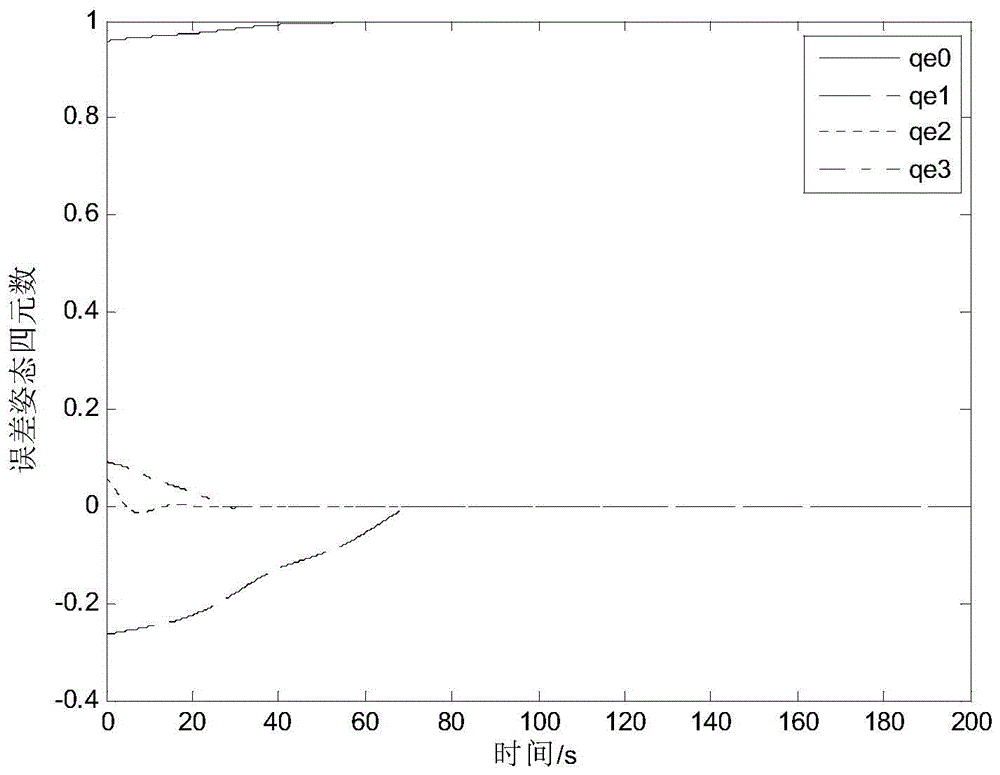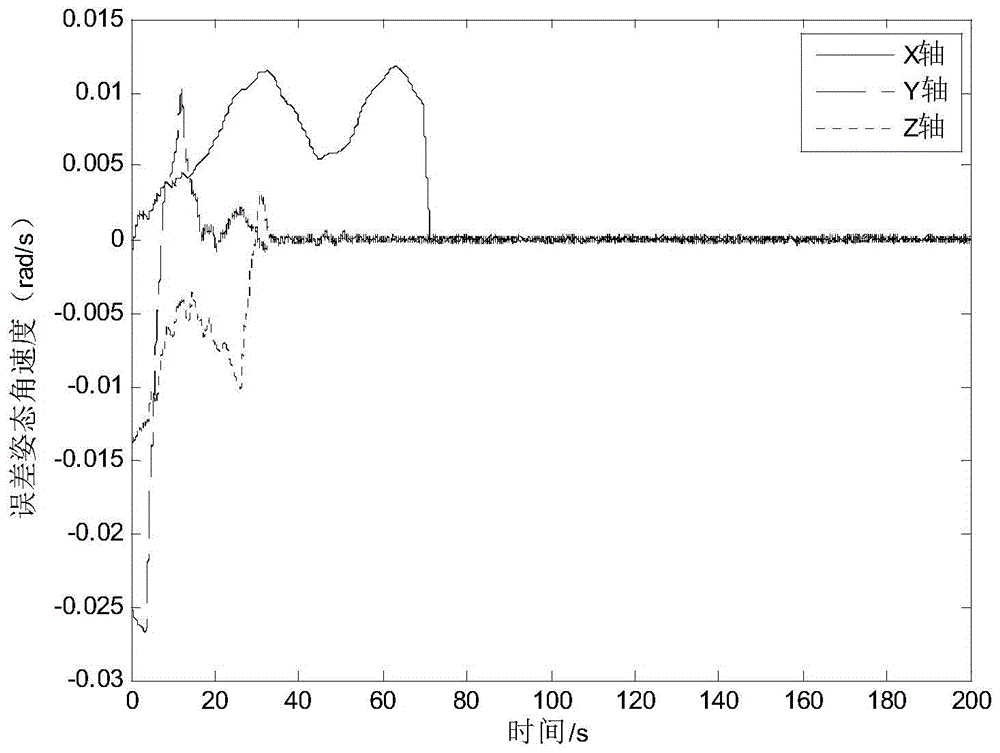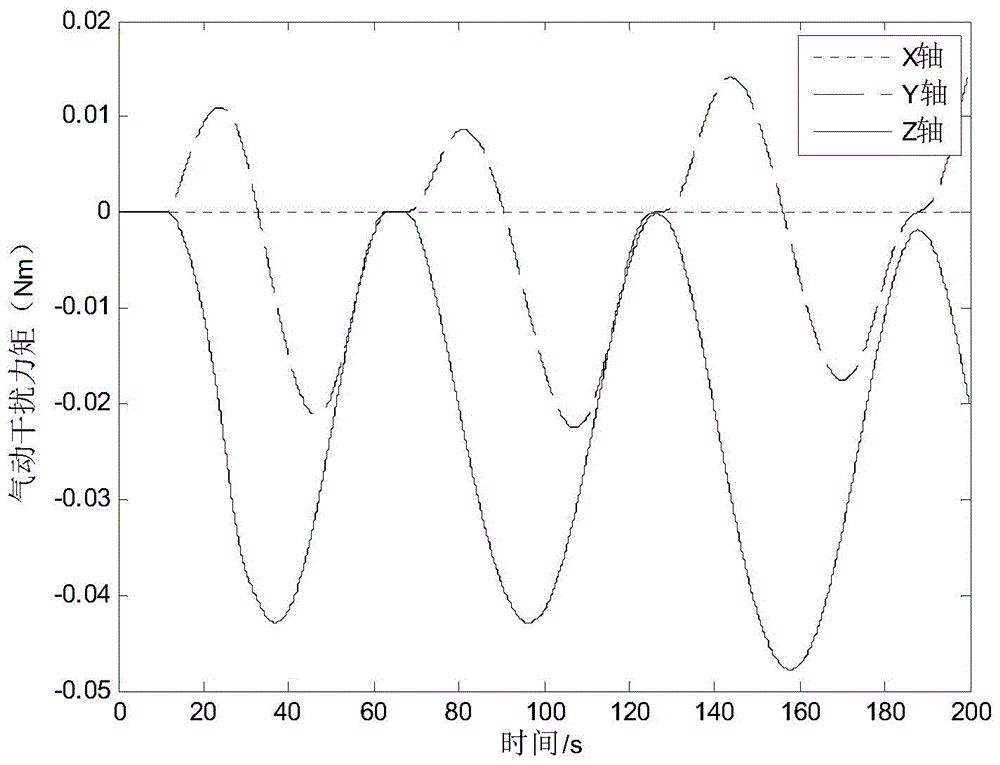Attitude Tracking Control Method for Low Orbit Flexible Satellite Based on Sliding Mode Observer
A sliding mode observer and flexible satellite technology, applied in attitude control, adaptive control, general control system and other directions, can solve the problem of low accuracy of satellite attitude tracking control, and achieve improved accuracy, simplified control methods, and refined control. effect of effect
- Summary
- Abstract
- Description
- Claims
- Application Information
AI Technical Summary
Problems solved by technology
Method used
Image
Examples
specific Embodiment approach 1
[0036] The low-orbit flexible satellite attitude tracking control method based on the sliding mode observer of the present embodiment, the low-orbit flexible satellite attitude tracking control method is realized through the following steps:
[0037] Step 1: Establish the geocentric inertial coordinate system OX I Y I Z I and satellite body coordinate system OX b Y b Z b ;
[0038] Step 2: Define the modal vibration state Therefore, the attitude dynamic equation of the flexible satellite is rewritten as a state space expression:
[0039] In the formula, Represents the modal vibration velocity, δ represents the rigid-flexible coupling matrix, ω bI Indicates the current attitude angular velocity;
[0040] x is the system state quantity,
[0041] A represents the system matrix,
[0042] B represents the control input matrix,
[0043] y represents the measured output value of the state-space system,
[0044]H represents the measured output torque,
[0045] u repr...
specific Embodiment approach 2
[0057] The difference from the specific embodiment 1 is that the attitude tracking control method of the low-orbit flexible satellite based on the sliding mode observer in this embodiment, the earth-centered inertial coordinate system OX described in step 1 I Y I Z I , the coordinate origin of the geocentric inertial coordinate system is the earth's center of mass, OZ I axis along the direction of the earth's rotation axis pointing north, OX I The axis points to the direction of the vernal equinox, OY I Axis and OX I Shaft and OZ I The axes form a right-handed Cartesian coordinate system;
[0058] Satellite body coordinate system OX described in step 1 b Y b Z b , the coordinate origin of the satellite body coordinate system is the center of mass of the satellite, OX b Axis, OY b Shaft and OZ b The axis is fixedly connected with the star, and makes the OX of the coordinate axis b Axis, OY b Shaft and OZ b axis coincides with the satellite's main axis of inertia. ...
specific Embodiment approach 3
[0060] The difference from Embodiment 1 or Embodiment 2 is that the attitude tracking control method of the low-orbit flexible satellite based on the sliding mode observer in this embodiment, as described in step 2, rewrites the dynamic equation of the attitude of the flexible satellite into a state space expression: In the formula,
[0061] x is the state quantity of the system and x=(η T ψ T ω bI T ) T ,
[0062] η represents the modal vibration displacement,
[0063] A represents the system matrix and
[0064] B represents the control input matrix and
[0065] C represents the damping matrix of the modal vibration,
[0066] K represents the stiffness matrix of the modal vibration,
[0067] y represents the system measurement output value,
[0068] H represents the measurement output matrix. Since the observer only needs attitude angular velocity information to obtain the modal vibration, in order to facilitate the expression of the observer, then H=(0 0 I ...
PUM
 Login to View More
Login to View More Abstract
Description
Claims
Application Information
 Login to View More
Login to View More - R&D
- Intellectual Property
- Life Sciences
- Materials
- Tech Scout
- Unparalleled Data Quality
- Higher Quality Content
- 60% Fewer Hallucinations
Browse by: Latest US Patents, China's latest patents, Technical Efficacy Thesaurus, Application Domain, Technology Topic, Popular Technical Reports.
© 2025 PatSnap. All rights reserved.Legal|Privacy policy|Modern Slavery Act Transparency Statement|Sitemap|About US| Contact US: help@patsnap.com



